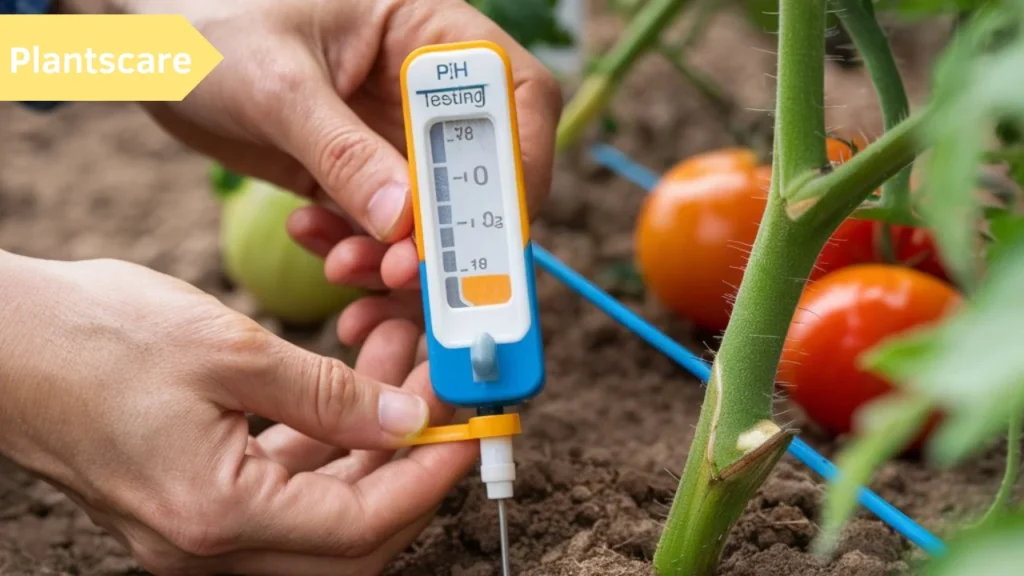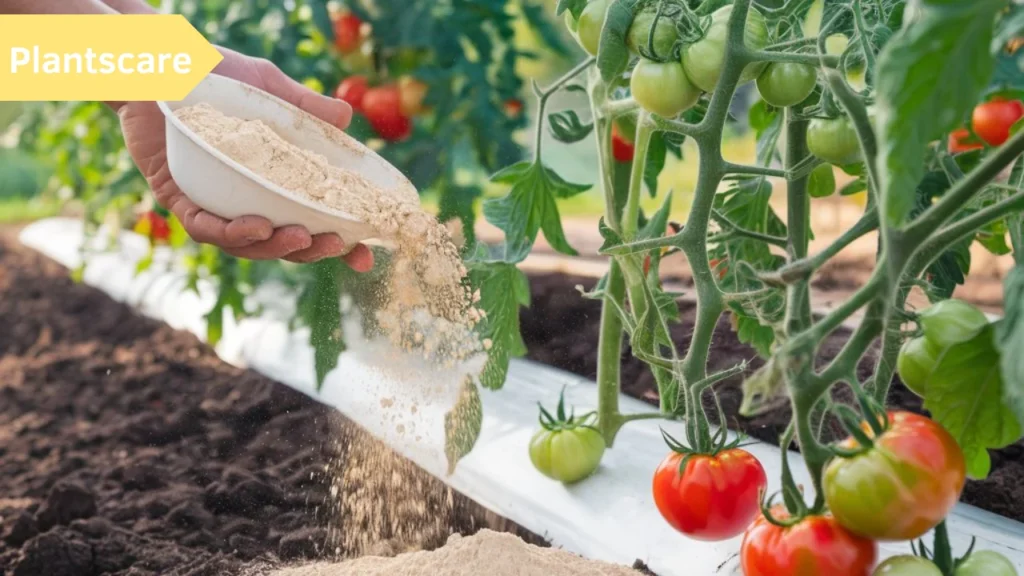“Tomato pH Requirements” Growing tomatoes isn’t just about watering and fertilizing; getting the soil’s pH right is equally critical. But what exactly does pH mean, and how does it influence the success of your tomato plants?
What is Soil pH and Why Does It Matter?
Soil pH refers to how acidic or alkaline the soil is, measured on a scale from 0 to 14. Seven is the neutral pH, seven is acidic, and seven is alkaline. Most plants, including tomatoes, thrive in soil that falls within a specific pH range. The right pH ensures that your tomato plants can absorb nutrients like nitrogen, phosphorus, and potassium effectively.
The Ideal pH Range for Tomato Plants
Tomatoes prefer a slightly acidic soil pH. The sweet spot for most tomato varieties is between 6.0 and 6.8. If the pH is too low (too acidic) or too high (too alkaline), it can lead to nutrient lockout, where the plants can’t take in the nutrients they need, even in the event that the soil contains certain nutrients.
How pH Affects Tomato Growth
Nutrient Absorption and pH
The soil pH affects how well your tomatoes can absorb essential nutrients. In slightly acidic soils (6.0-6.8), tomatoes can access all the critical nutrients they need for growth. If the pH is too far off, certain nutrients like phosphorus or magnesium become less available, leading to deficiencies that can stunt growth and reduce yields.
Common Problems with Incorrect pH Levels
Tomato plants that are grown in soil with a pH that’s too high or too low may show signs of poor health, such as yellowing leaves, weak stems, and underdeveloped fruits. In severe cases, the plant may fail to produce fruit altogether.
Testing Soil pH for Tomato Plants
Before adjusting your soil’s pH, you need to know where it currently stands.
DIY pH Testing Methods
You can perform simple DIY soil pH tests at home using vinegar and baking soda. If the soil fizzes with vinegar, it’s alkaline, and if it fizzes with baking soda, it’s acidic. However, these methods are not very accurate and should only be used for rough estimates.
Professional Soil pH Testing Kits
For more accuracy, invest in a soil pH testing kit. These kits are widely available at garden centers and provide a reliable measurement of your soil’s pH level.
Adjusting Soil pH for Tomatoes
Once you’ve tested the pH of your soil, you may need to make adjustments to ensure it’s in the optimal range for growing tomatoes.
Lowering Soil pH
If your soil is too alkaline (pH above 6.8), you can lower the pH using various methods.
Using Sulfur
One typical amendment used to reduce the pH of soil is sulfur.It works slowly, so it’s best applied months before planting.
Adding Organic Matter
Compost, peat moss, and other organic matter can naturally acidify the soil over time. This method is ideal for gardeners who prefer organic solutions.
Raising Soil pH
If your soil is too acidic (pH below 6.0), there are several ways to raise it.
Using Lime
Agricultural lime is the most effective way to raise soil pH. It neutralizes acidity and is relatively easy to apply.
Wood Ash Application
Wood ash can also raise pH, though it should be used sparingly as it acts quickly and can overshoot the desired pH level if not monitored carefully.

Maintaining the Right pH Balance Throughout the Growing Season
It’s essential to monitor and maintain the pH balance throughout the tomato growing season. Regularly test your soil and make necessary adjustments as needed, especially if you’re applying fertilizers that can alter the pH.
The Role of Fertilizers in pH Management
Some fertilizers can affect soil pH. Ammonium-based fertilizers, for example, can lower pH over time. Choose fertilizers wisely and check the pH regularly to ensure it remains in the ideal range for tomato plants.
Best Practices for Growing Tomatoes in Containers
Container gardening offers flexibility when it comes to pH management since you can control the soil mix more easily. Use a high-quality potting mix with a pH of 6.0-6.8, and regularly test the soil in your containers.
Common Mistakes and How to Avoid Them
Many gardeners make the mistake of not testing their soil pH before planting tomatoes. This simple step can save you a lot of time and effort in the long run. Also, avoid overcorrecting your pH, as large swings in pH levels can be just as harmful as having an incorrect pH to begin with.
Signs Your Tomato Plants Are Suffering from pH Imbalance
Yellowing Leaves
Yellowing leaves, particularly those at the bottom of the plant, can be a sign that the pH is off, leading to nutrient deficiencies like nitrogen.
Poor Fruit Development
If your tomato plants are flowering but not producing fruit, or the fruits are small and underdeveloped, a pH imbalance could be to blame.
Expert Tips for Managing pH in Different Types of Soil
Clay soils tend to be more alkaline, while sandy soils are often more acidic. Your soil type can help you manage pH more effectively.
Organic Methods to Manage Tomato pH
Organic matter like compost and mulch can help stabilize pH over time. These materials improve soil structure and promote healthy microbial activity, both of which contribute to maintaining the right pH balance.

Conclusion
Getting the pH right for your tomatoes is essential for a bountiful harvest. Regular testing, making gradual adjustments, and maintaining proper soil health will ensure your plants have the best environment for nutrient uptake and growth. Whether you grow your tomatoes in the ground or in containers, managing the pH is one of the simplest yet most effective ways to keep your plants thriving.
FAQs:
What happens if my soil pH is too high for tomatoes?
High pH can cause nutrient deficiencies, leading to poor plant health and lower yields.
How often should I test my soil pH?
It’s best to test your soil pH at least twice a year, once before planting and again mid-season.
Can I use vinegar to lower soil pH?
Yes, but it’s a temporary solution. For long-term adjustments, use sulfur or organic matter.
What’s the easiest way to raise soil pH for tomatoes?
Applying lime is the most straightforward method for increasing soil pH.
Do all tomato varieties require the same pH?
Most tomato varieties prefer a pH between 6.0 and 6.8, but heirlooms may tolerate slightly different ranges.
Pingback: How to Take Care of Tomato Plants?